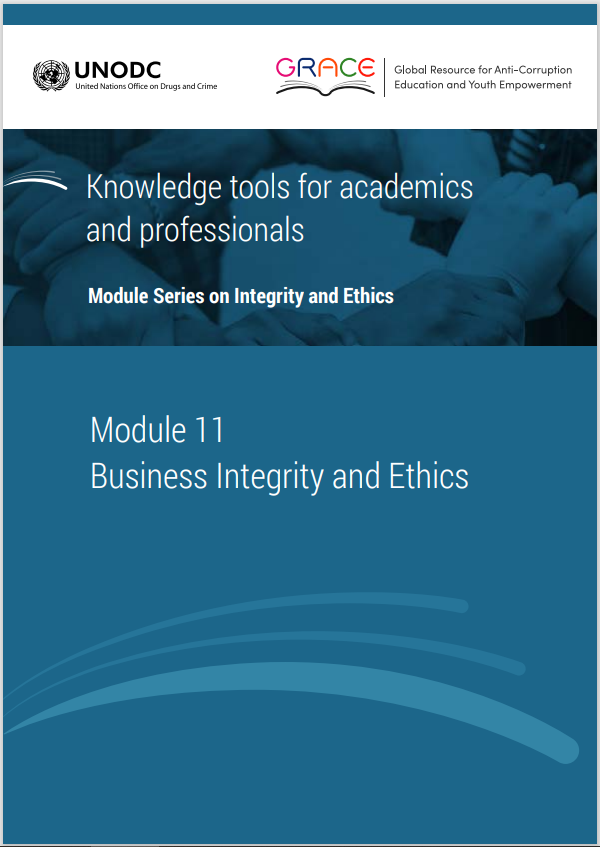This module is a resource for lecturers
Possible class structure
This section contains recommendations for a teaching sequence and timing intended to achieve learning outcomes through a three-hour class. The lecturer may wish to disregard or shorten some of the segments below in order to give more time to other elements, including introduction, icebreakers, conclusion or short breaks. The structure could also be adapted for shorter or longer classes, given that the class durations vary across countries.
Introduction (10 mins)
- The lecturer discusses the goals and objectives of the Module, the teaching methods, and the links with E4J Integrity and Ethics Module 1, and introduces the class structure and the plan for assessment. The lecturer could refer to the pre-class exercise and ask students about the ethical dilemmas presented in the e-learning tool.
Applying ethics in business and the business case for ethics (40 mins)
- The lecturer explains, in an interactive exchange with the students, the ways to apply ethical principles in business, referring to different levels as well as the six principles discussed in the Key Issues section of the Module.
- A hypothetical or historical business decision could be analysed to reveal its alignment (or lack thereof) with the six principles described; the extent to which it incorporates stakeholder interests and the common good; and the extent to which it contributes or not to an ethical climate and culture for the business.
- The lecturer summarizes the points raised, stressing the various benefits that businesses enjoy when they act ethically in terms of reputation, talent attraction, license to operate, access to public funding and procurement, international projects, societal expectations and innovation. The lecturer also touches briefly on the SDGs and the private sector's role in promoting them.
- The lecturer conducts Exercise 1 and/or Exercise 2.
Discourse on managing business ethics (20 mins)
- The lecturer introduces the management framework commonly found in integrity and ethics programmes in business (see discussion on managing business ethics in the Key Issues section of the Module).
- The lecturer could also ask the students to look, in an open discussion, at a business integrity and ethics programme through the lenses of external stakeholders - e.g. regulators, NGOs, industry organizations - while drawing on the freely available resources listed below.
Introducing codes of conduct and codes of ethics (30 mins)
- To set the scene for an interactive session, the lecturer introduces various codes of conduct and codes of ethics from different types of businesses, including the challenges in embedding them and their scope and perceived limitations. Issues like their purpose for business, their scope (e.g. employees and business partners), language selection, and content should be discussed.
- The lecturer leads a class discussion on the various topics that are typically included in a code of conduct, as well as its style and structure and clear references to components of the management framework and tone from the top.
- The lecturer could use the slides provided in the Module to introduce codes of conduct for businesses.
- The lecturer then introduces three codes of conduct selected from different industries or sectors that will be used during the interactive session. Diverse codes should be put forward, e.g. representing different industries, employees, geographical locations and cultural contexts. The following codes are suggested: Tata Group, Duratex, GlaxoSmithKline, ExxonMobil, and Spectris.
Exercise 3 (30 mins)
- The lecturer conducts Exercise 3.
Exercise 4 (40 mins)
- The lecturer conducts Exercise 4.
Wrap up (10 mins)
- The lecturer summarizes what has been learned in the three-hour class, emphasizing the following points:
- Business ethics is an essential component of a successful and sustainable business.
- Businesses must chart their values in a meaningful way to engage with their employees and help them take sound and ethical business decisions.
- A corporate culture of openness, truth and integrity is essential for finding ethical solutions that meet the needs of the various stakeholders of the companies and adequately respond to complex dilemmas that require a deep cross-functional approach.
 Next page
Next page
 Back to top
Back to top
